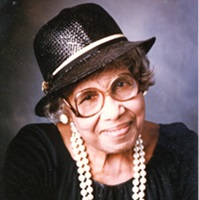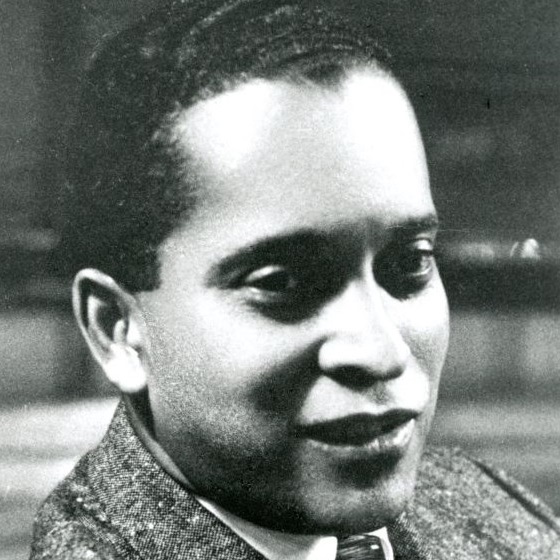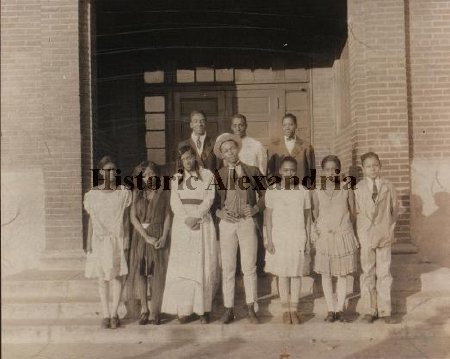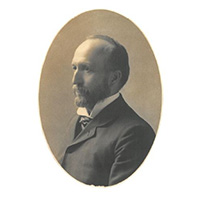
Historic Alexandria
The museums, historic structures and collections managed by Historic Alexandria reflect the diversity of centuries of Alexandria history and provide a context for understanding the broader scope of regional, state and national history.
Our current online collections include those from the Alexandria Black History Museum relating the history and accomplishments of African Americans in Alexandria; the Lewis Cass White Collection from Fort Ward Museum; John Gadsby’s Silver from Gadsby’s Tavern Museum; and the archival collection from the Stabler-Leadbeater Apothecary Museum.
Alexandria Black History Museum
The Alexandria Black History Museum houses collections relating the history and accomplishments of African Americans in Alexandria.

Annie B. Rose Collection: The Annie B. Rose Collection documents the life and work of social activist Annie Beatrice Bailey Rose [January 7, 1893 – April25, 1989]. The archive contains letters, documents, notepads, speeches, and other material relating to several aspects of Rose’s life, including religion, education and schools, African American history and historic sites, and church, community, fraternal, and political organizations. Additionally, the archive contains material related to Rose’s father, Reverend Lewis Henry Bailey, and her aunt, Jennie Dean, who founded the Manassas Industrial School. Introduction: The Annie B. Rose Collection. Learn more.

Ben Holt Collection: The Ben Holt, Jr. Collection documents the career of Black opera singer, Ben Holt Jr. (September 24, 1955 - May 5, 1990), who played Malcom X in Anthony Davis’ opera, “X, The Life and Times of Malcolm X,” at its world premiere in 1986. The collection, amassed by his mother, Mayme Holt, includes 32 scrapbooks containing photographs, papers, letters, playbills, newspaper clippings, and other memorabilia documenting his career. Additionally, there is sheet music, some annotated by Holt, and a small number of video and cassette tapes of his performances. It also contains material relating to “The Ben Holt Memorial Society” Mayme Holt founded, following his untimely death aged 34. Introduction: The Ben E. Holt, Jr. Collection. Learn More.

The Black Lives Remembered Collection: Following the tragic murder of George Floyd on May 25, 2020, the Alexandria Black History Museum put out a call to the community to record their feelings, thoughts, artwork, photographs, and objects that would help us to document the legacy of the Alexandria community’s response to this tragedy and the wave of peaceful protests and vigils that followed. The objects and digital photographs that we received from the local community form the basis of the Museum’s Black Lives Remembered Collection. The Collection contains a large volume of digital photographs, as well as include artwork, signs, magazines, pins, and clothing. Learn more about this collecting initiative in Preserving Their Names. New submissions to the collecting initiative are still received here. Learn more

Carlton Funn Collection: In the late 1950s 7th Grade History teacher, Mr. Carlton Funn, Sr., began to collect posters, books, pamphlets, artifacts and more, to make his African American students “aware of their positive heritage,” stories lacking in the school’s history books. Over the next 50 years the collection grew in volume and scope to become the “National/International Cultural Exhibits (NICE),” an exhibition of almost 1,500 display boards “to promote awareness, human dignity and cultural understanding.” The boards feature a variety of mediums, including handwritten text and drawings, newspaper articles, photographs, and mounted poster series, including the history of Howard University Hospital, the Holocaust, immigration, woman’s rights, and the Niagara Movement. Finding Aid. Online Exhibit: The Importance of being "NICE". Learn more.

Moss Kendrix Collection: The Moss H. Kendrix Collection documents the life and work of Moss H. Kendrix, a trailblazer in public relations, whose work transformed representation of African American consumers in the media. This vast archive is organized into many themes, and selected documents will be available on HACO, beginning with the category “Celebrities.” Kendrix worked with or was interested in news about many famous African American people and organizations and initiated or collected the following materials from 1947-1963: photographs, clippings, biographical sketches, correspondence, programs, press releases, sheet music, receipts, publicity documents, and souvenir albums. Online Exhibit: Moss H. Kendrix and the Moss H. Kendrix Organization. Learn more.

Parker-Gray School Archives: The Parker-Gray Archives seeks to preserve documents, photographs, yearbooks and other memorabilia relating to the Parker-Gray school. The segregated school graduated its first four-year high school class in 1936. Over time, the school gained a reputation for its dedicated teaching staff, who despite the constraints of segregation, were able to provide a positive learning experience. Parker-Gray High School moved to a new building at 1207 Madison Street in 1950, and the old school on Cameron Street became the Charles Houston Elementary School. The high school was phased out during the 1964-1965 school year, following integration of Alexandria’s schools. Parker-Gray was used as an integrated middle school from 1965 until 1979, when it closed its doors. The online collection currently includes a portion of the black-and-White photography collection, part of an ongoing digitization project. If you are able to identify individuals in the photographs, please use this form to share this information with the Museum. Learn more.

Sherry Z. Sanabria Paintings: The Sanabria family generously donated 23 of Sherry Z. Sanabria’s African American historic site paintings to the Museum. Many of them are showcased in the Museum’s exhibition, “Before the Spirits are Swept Away” and all the paintings can now be viewed on the Museum’s collection site. Through the paintings, the exhibition explores slavery, interpretation, and preservation of African American sites in the American South. Before she passed away in 2014, Sanabria had a studio at Alexandria's Torpedo Factory Arts Center. These paintings were part of her Sites of Conscience series, which focused on African American heritage, as well as prisons, concentration camps, and mental health hospitals. The paintings transport viewers to places of horror, places of pain and suffering, places we want to forget, but never should. Learn more.
Fort Ward Museum & Historic Site
Fort Ward Museum features a collection of over 2,000 objects from the Civil War period, primarily of Union origin, in conjunction with the Federal history of the site. Also included are objects related to the Civil War Defenses of Washington, and local Civil War history.

Lewis Cass White Collection:The Lewis Cass White collection consists of almost 200 documents, objects, photographs, and ephemera related to White’s Civil War service, as well as his post-war mission to preserve the Defenses of Washington. The bulk of his efforts were focused on memorializing the Battle of Fort Stevens and the events surrounding what is known as “Lincoln Under Fire”. The collection was generously donated to Fort Ward Museum and Historic Site in 2014 by Joseph and Sharon Scopin. Image courtesy of Kathryn P. Forbes. Learn more.
Gadsby’s Tavern Museum
Gadsby's Tavern Museum consists of two buildings, a ca. 1785 tavern and the 1792 City Tavern, that provided a space for discussing revolutionary ideals and how to put them into practice in early America.

John Gadsby’s Silver: Englishman John Gadsby was a famed tavern keeper and hotelier in Alexandria, Baltimore, and Washington, D.C. from 1796 to 1836. He retired to what is now known as the Decatur House, located near the White House. Gadsby’s Tavern Museum’s silver collection consists of cutlery, serving platters, chafing dishes, and wine chillers, which graced the tables of his various hotels and his private residence. Stamped “Gadsby,” these silver pieces conveyed John Gadsby’s refinement and hospitality to his friends and hotel guests. Learn More.
Stabler-Leadbeater Apothecary Museum
The Stabler-Leadbeater Apothecary Museum boasts a vast collection of herbal botanicals, hand-blown glass, medical equipment and archival materials used in this family business, in operation from 1792 until 1933.

Apothecary Museum Archival Collection: The online archival collection is comprised of letters, invoices, account books, and ledgers of the apothecary and pharmacy business owned by the Stabler and Leadbeater families. Check the types of scanned documents listed, and search the collection by placing a name, date, or document name in the search box. This collection is presented in a separate application, the City of Alexandria Document Management Portal.
Watson Reading Room
The Watson Reading Room is a non-circulating library of over 4,000 volumes. The collection covers a wide range of topics related to the Black experience, including genealogies and local church histories, and contains some first editions and rare volumes. Most of the books have been donated and book donations are still gratefully accepted.

Library Collection: Use the "Library” search button or the “Subjects” headings listings to search the Watson Reading Room’s collection and make an appointment to visit at 703.746.4356.
More Historic Alexandria Museums
Reproduction Rights
No photograph or image may be reproduced without prior written permission.
Disclaimers
Please note that the Carlton Funn Collection consists of educational materials created from the 1950s to the 2010s and some of the information and language used may be outdated or incorrect. Please be aware of this when choosing materials to use with students. Also note that some content, such as graphic images of the Holocaust, may be upsetting to viewers.
